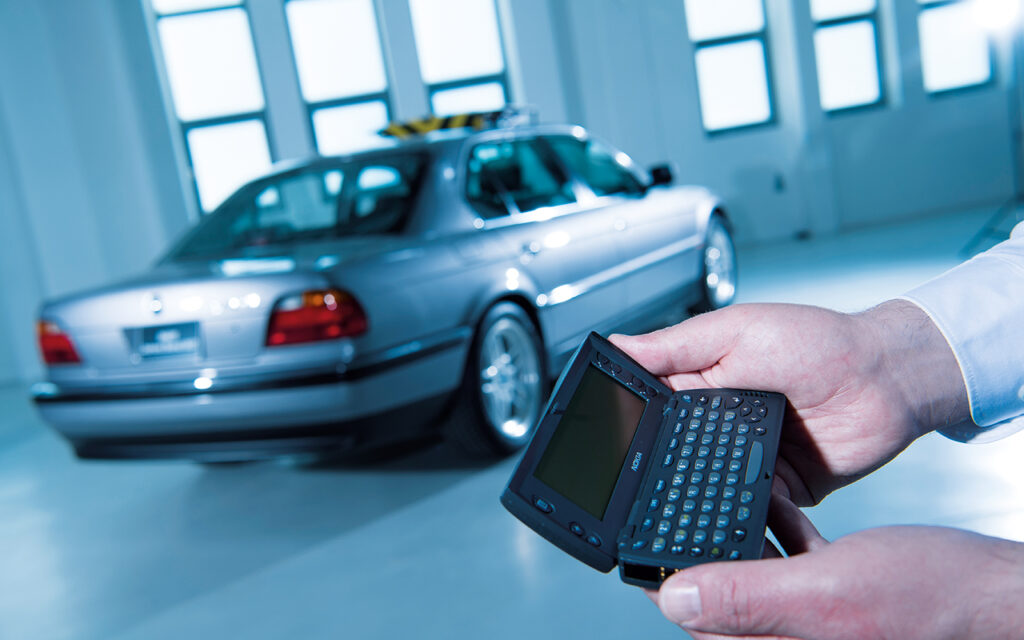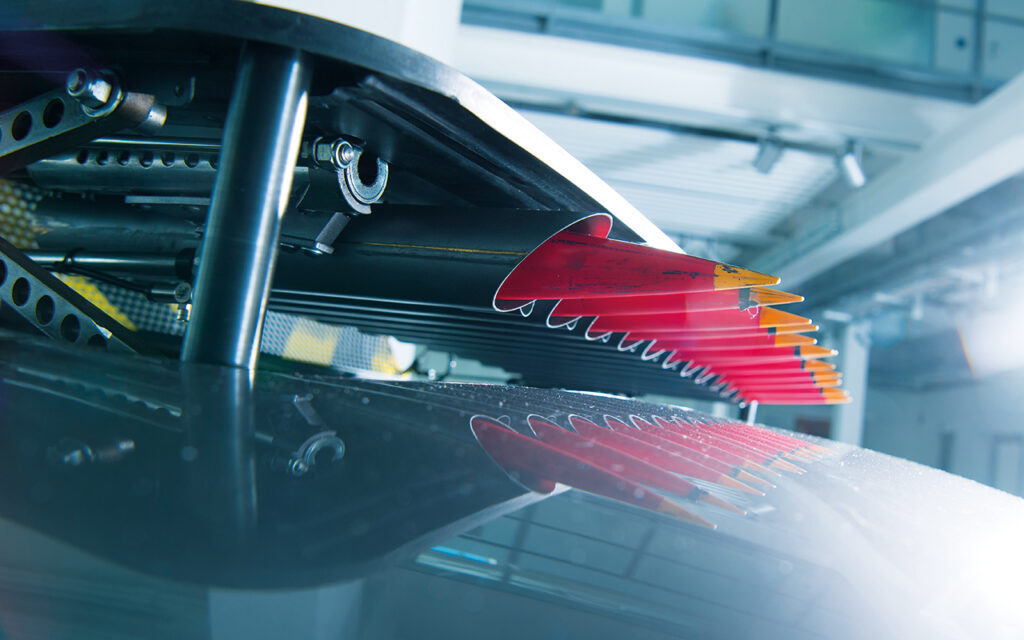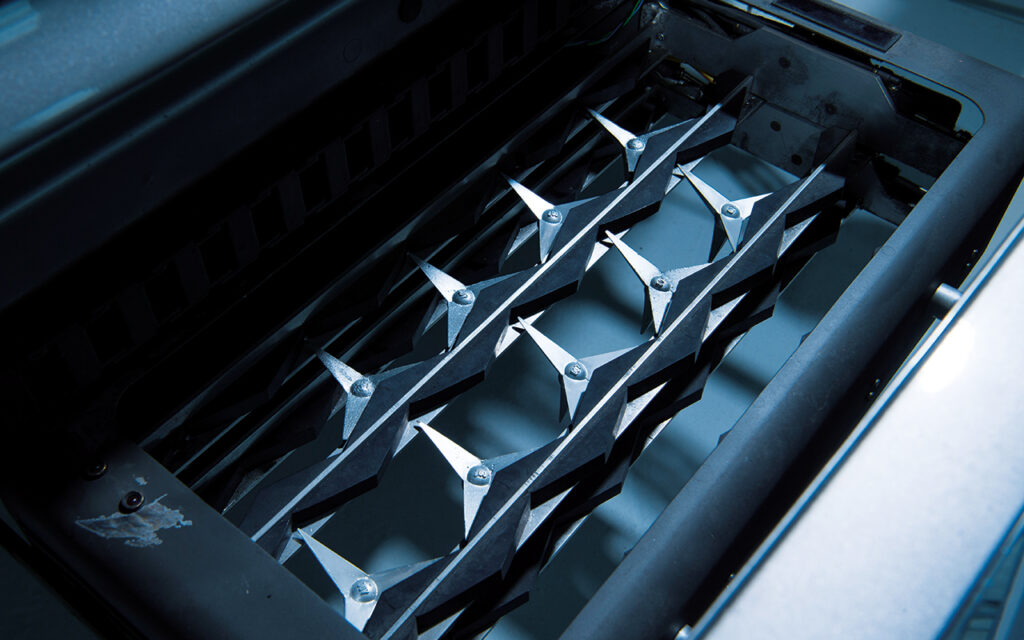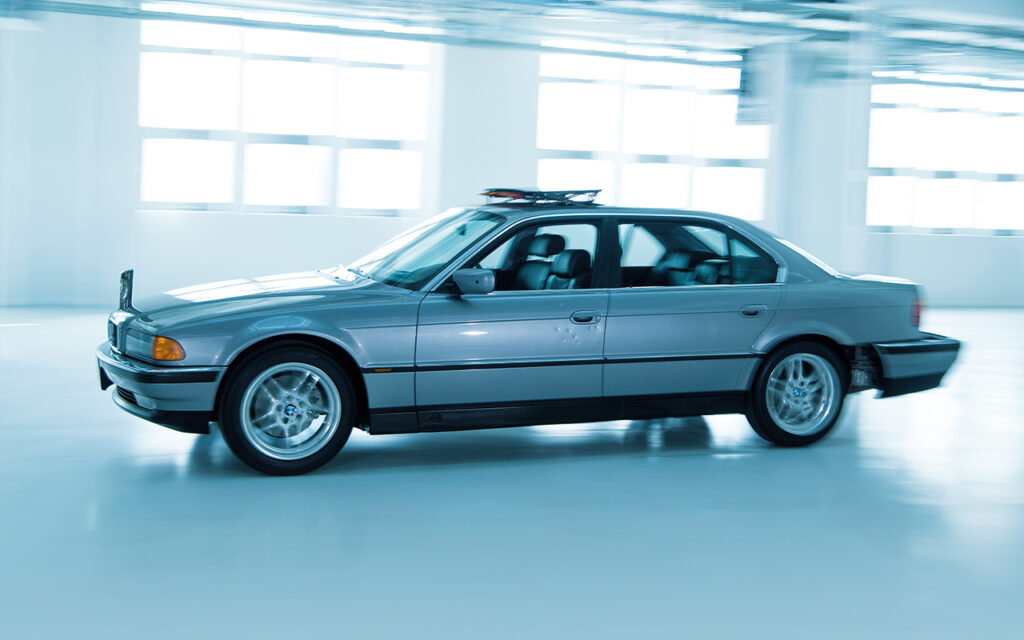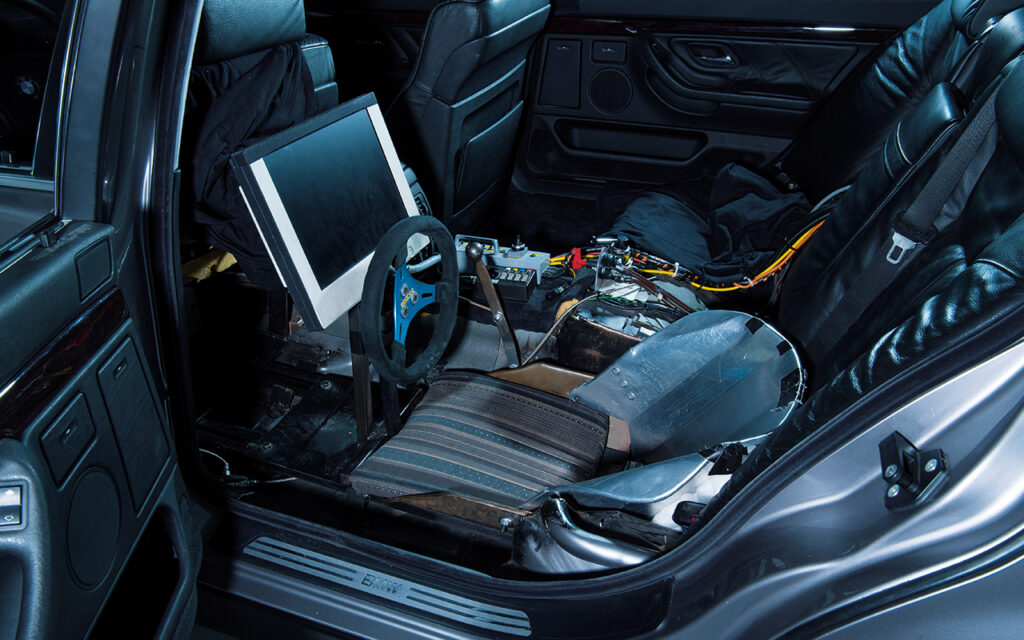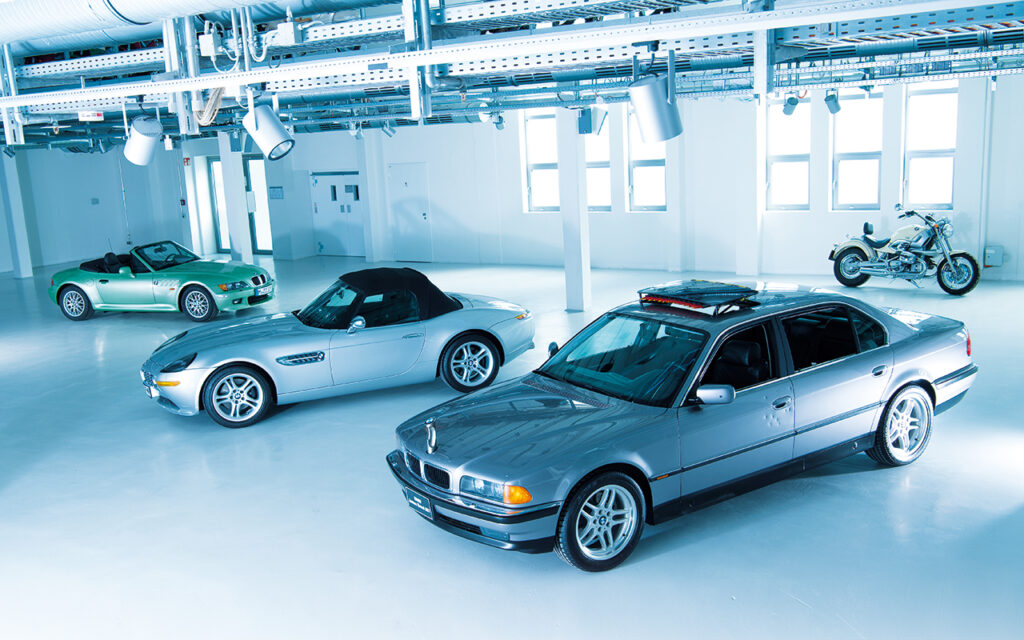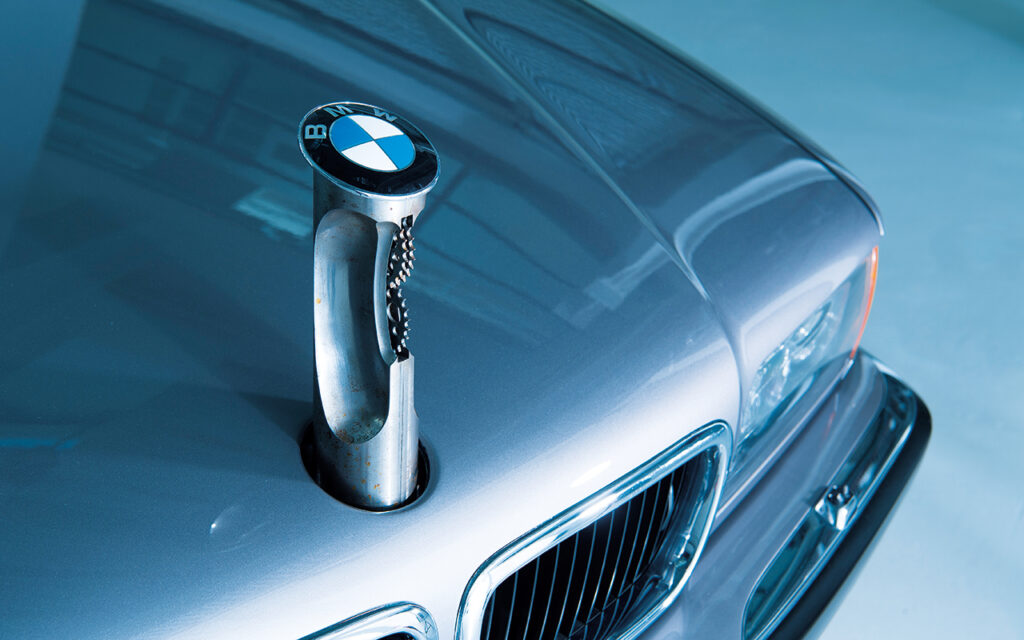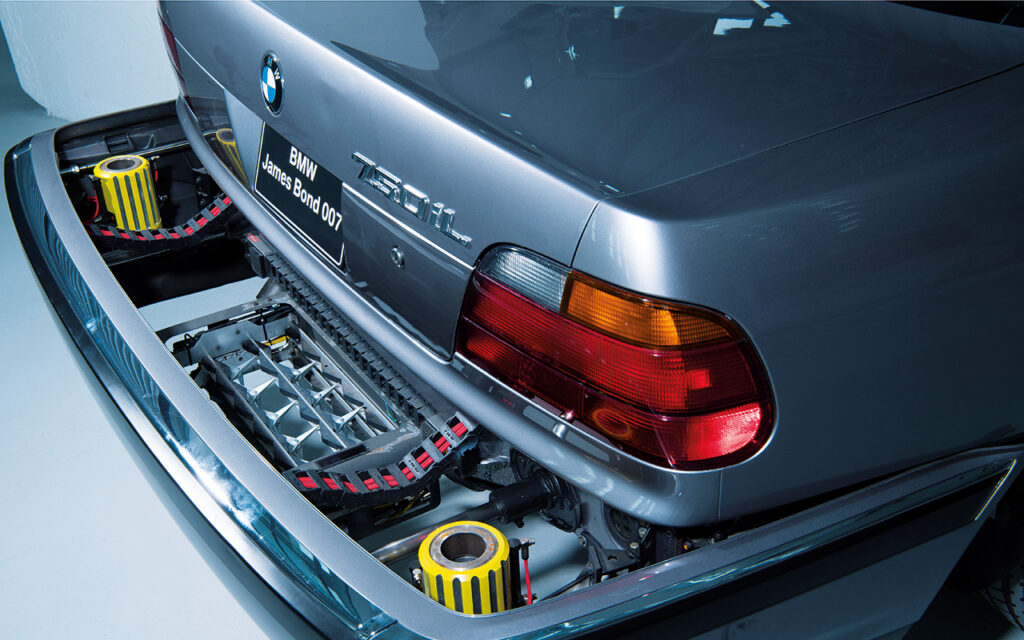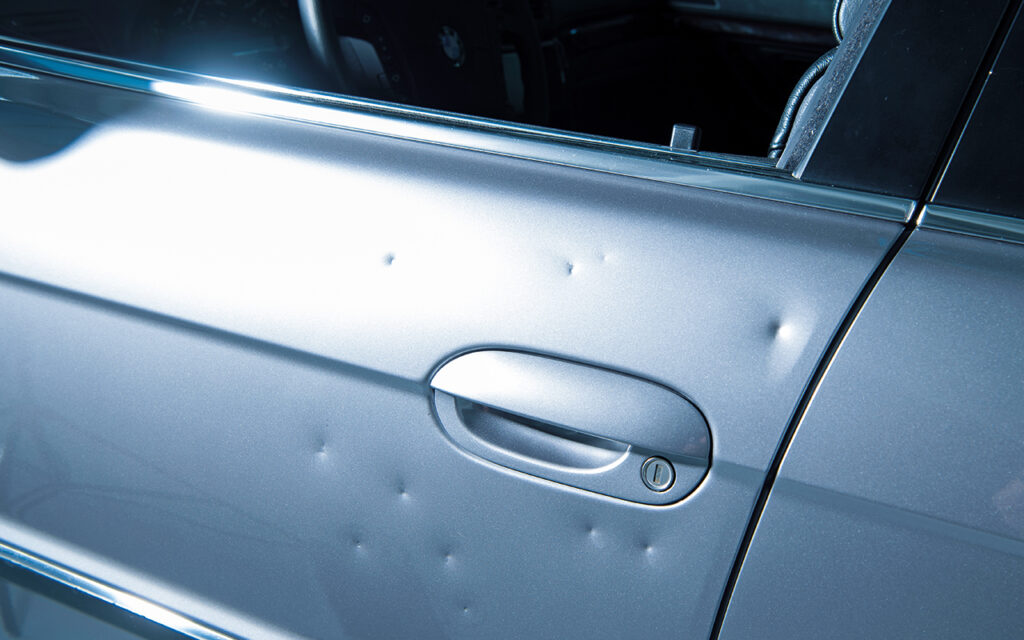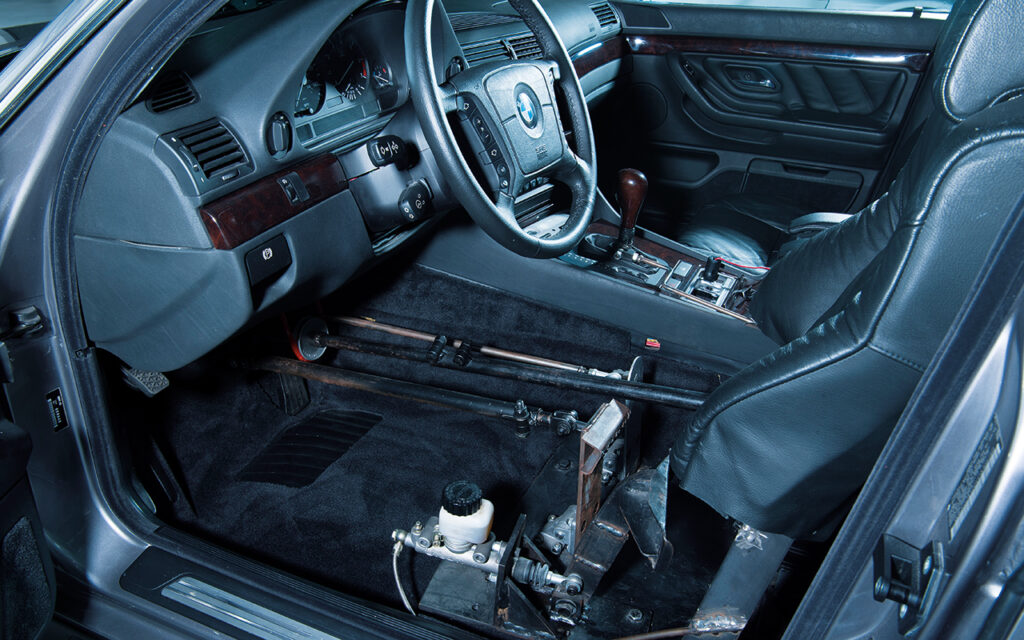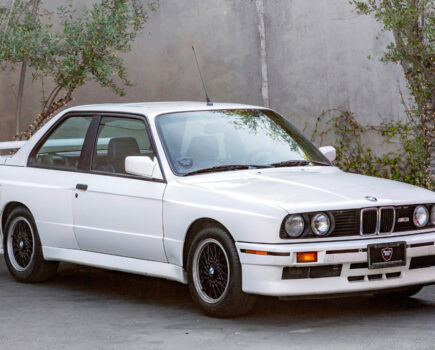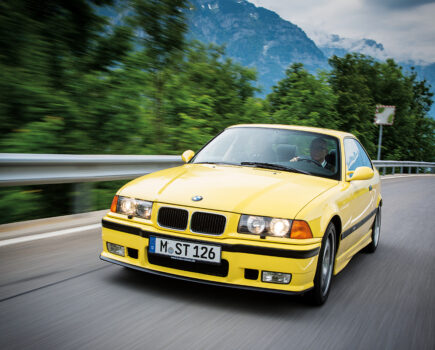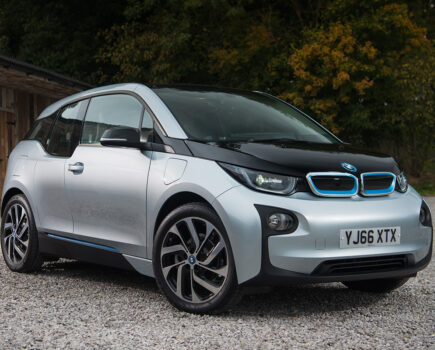Perhaps the most controversial of James Bond film cars, the remote control, rocket-launching BMW 750iL has an interesting story behind it
Words: Liam Heitmann-Ryce
If you were to play the word-association game with ‘James Bond’ and ‘car’, the first thing to come out of a person’s mouth would most likely be ‘Aston Martin’, or maybe ‘underwater Lotus’; fans of the books could even jump to ‘Bentley’. However, most would probably imagine the silver Aston Martin DB5 from Goldfinger, complete with ejector seat and front-mounted machine guns, or they may picture the sleek white Esprit from The Spy Who Loved Me diving off the edge of a jetty and gracefully transforming into a propeller-powered submarine. No matter what, the consensus is clear: Bond cars are sleek, sexy, almost always two-door coupés, and represent the highest automotive aspirations of just about every filmgoer and car enthusiast.
Enter BMW. Despite a strong reputation for luxury vehicles with faultless sporting credentials, the German marque has long received short thrift from even casual Bond fans. The outrage that their favourite superspy would be seen in anything as recognisably suburban as a BMW may have diluted since the 1990s, but Bayerische Motoren Werke is still unlikely to appear in the Bond car word-association game.
A James Bond for the new millennium, Pierce Brosnan’s rendition of the suave secret agent, brought with it some notable product placement in the form of Omega wristwatches, Brioni tailoring, and three very flash BMWs. Beginning with GoldenEye, audiences were given a sneak preview of the understated – and despairingly gadget-free – Z3 roadster, with 1997’s Tomorrow Never Dies thrusting James Bond into the back seat of a remote-control 750iL and 1999’s The World Is Not Enough placing him behind the wheel of the achingly beautiful Z8 roadster, complete with side-mounted missile launchers.
Of the three, the full-size E38 7 Series routinely suffers the harshest criticism from fans, lacking the immediate glamour of its two-seater counterparts. For all the excesses in product placement exhibited by the decades-long franchise, Tomorrow Never Dies is frequently pinned as a low point of 007’s onscreen outings. Much of that vitriol is directed toward the 750iL provided for Bond while on assignment in Hamburg, a vehicle fitting for his cover as a British banker but otherwise dismissed as one of the most lacklustre cars ever to have wound up in a Bond film.
This has always bothered me, as perhaps the only person I know who upholds the “007 Series” as their favourite James Bond car. Upon voicing that opinion I am met with a mixture of ambivalence and disbelief, with the unbeatable pairing of James Bond and Aston Martin almost completely invalidating my own choice. Few people are willing to recognise the sleek muscularity of this imposing sports sedan, with the regal E38 representing the pinnacle of BMW’s strikingly elegant and inoffensively boxy automotive design.
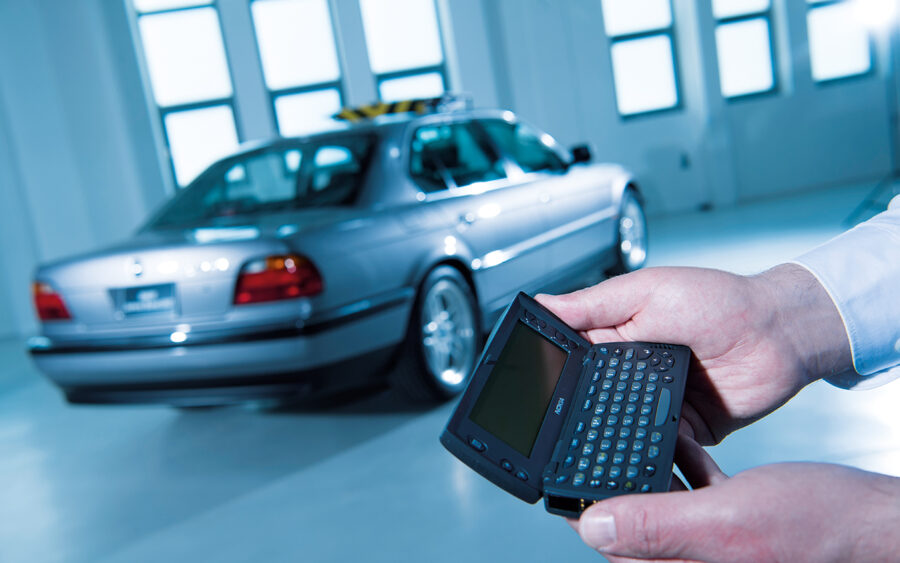
Of the 750iL we see onscreen, I am confident BMW purists will join me in playfully scorning Desmond Llewelyn’s Q for the incorrect pronunciation of the model number, referring to the car as “your new BMW seven-hundred-and-fifty.” Yet this may well have been the doing of director Roger Spottiswoode. For many of his appearances as Q throughout the series, Llewelyn commonly read off what he called ‘idiot cards’ to guide him through his character’s famously jargon-laden dialogue, yet for Tomorrow Never Dies Spottiswoode insisted the 82-year-old actor recite his lines by heart.
Nevertheless, I feel assured in my defence of the 750iL as one of 007’s greatest vehicles, for my views are shared by the current authority voice on the subject of James Bond’s four-wheeled co-stars. Journalist and broadcaster Jason Barlow is a contributing editor for GQ and Top Gear magazine, and the author of last year’s 336-page masterwork Bond Cars: The Definitive History. With a career in automotive journalism that has seen him at the launch of every major BMW model of the past quarter-century, Barlow was more than happy to share some love for the ‘007 Series’, as well as offer some revelations about its onscreen appearance which weren’t published his book.
Jason begins by sharing that the Tomorrow Never Dies BMW is “one of my favourite Bond cars. There’s a strong case to be made for the E38 being the most elegant of all the 7 Series iterations, the archetypal large German saloon.” While he concedes there are individual highlights within BMW’s illustrious history, such as the E30 3 Series, the original 6 Series and the classic 2002, he broadly believes “that BMW’s design peaked in the Nineties. Chris Bangle, whose work I always defend – although he was a better designer of products than of cars – had to kick against it in order to move the brand forward.”
And kick the trend Bangle certainly did, for the defence rallied by Mr Barlow for these design innovations is not one shared by the author of this article. After the sleek musculature of BMW design embodied by the E36 3 Series, E39 5 Series and first-generation X5, my view on the bulbous, wallowing vehicles produced under Bangle’s design direction is that they are nothing short of sacrilege.
His penchant for creating vehicles with drooping rear ends, a design trademark derisively known as the “Bangle butt” – exemplified by the E65 7 Series and E64 6 Series – was initially viewed with the same kind of vitriol previously reserved for the “egg yolk” headlights of the 996 Porsche 911 Carrera. While the latter has been more favourably reassessed in recent years, it is uncertain whether anyone can look at the offensively pudgy 7 Series of the early 2000s and assert its status as an icon of automotive design, in the same way its class-leading predecessor had in the decade prior.
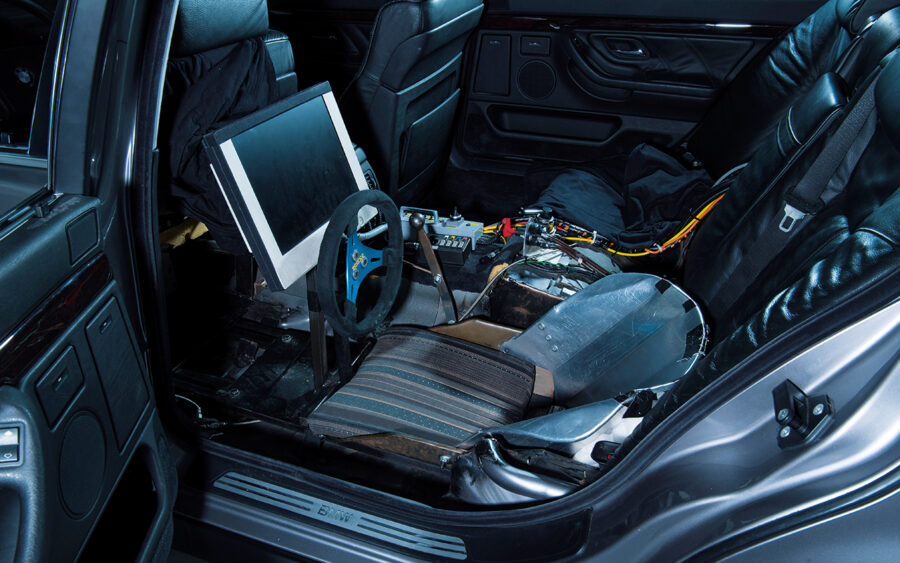
Yet despite the subtle grace of the E38, there was no escaping its vast dimensions as a long-wheelbase saloon, so its presence in a Bond film was not one received with ecstatic approval. Indeed, it was overlooked as little more than brazen product placement, despite the producers’ best efforts to call back the classic DB5 with the BMW’s Aspen Silver paintwork and an almost identical registration plate. But 007 in a German four-door, in a company car? For many, it was inexcusable.
Jason stands by me here in defending the 750iL’s place within the James Bond canon.
“I certainly don’t dismiss the E38 in Tomorrow Never Dies as a piece of opportunistic product placement. One could argue that it’s exactly the right sort of car for Pierce Brosnan’s Bond. It has that sort of crisply tailored precision: there’s a modernism to the E38, an almost clinical sense of aesthetic perfection,” he says.
Jason keenly points out how sharp the low-slung saloon looks compared to the other vehicles in the film’s famous car park chase sequence, riding on non-standard 18” M Sport alloys that really give the car its shark-like grace.
While his chapter on the E38 in Bond Cars is about as comprehensive as one can hope for, the result of weeks of research within the EON production archives of the franchise’s near 60-year history, I suspected there was still more to be said about the car we saw onscreen. That hunch was well-founded, as Jason told me that the most profoundly nerdy things had to be excised in the edit in order to maintain the book’s general-interest appeal.
No matter which way you look at it, moviemaking is as much an artform as a business – and the James Bond films are no exception to this. Following the phenomenal success of GoldenEye in 1995, bringing Bond back to screens after a six-year absence, the follow-up was obligated to strike fast in order to capitalise on renewed fervour for the classic espionage series. This meant the next film had to surpass outlandishly high expectations, and so a budget of $110 million – almost twice the cost of GoldenEye – was sure to meet the challenge.
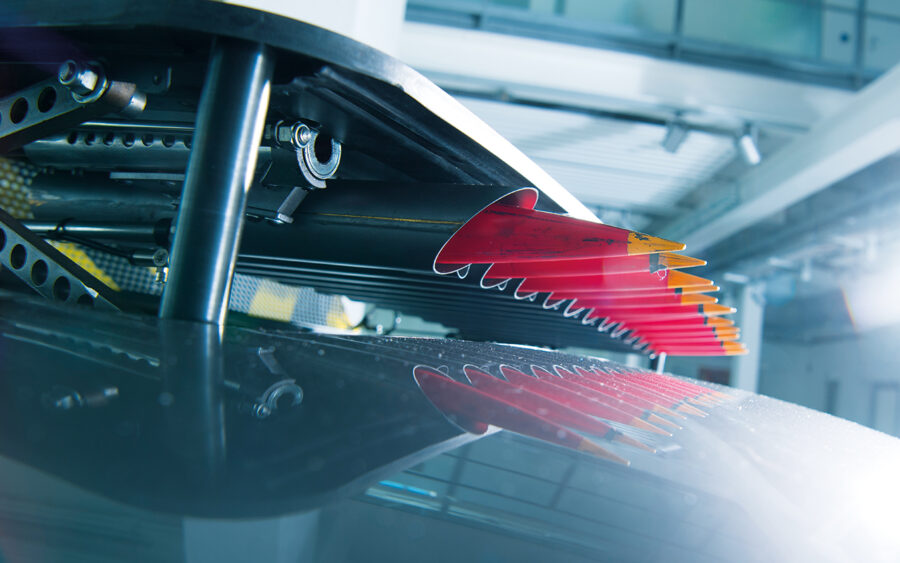
The enormous budgets required by each James Bond film make them especially dependant on promotional tie-ins, from the clothes Bond wears to the wheel he’s sat behind. In the case of Tomorrow Never Dies, that wheel belonged to the BMW’s flagship vehicle at the time. For most viewers accustomed the curvaceous grace of 007’s earlier two-door beauties, this full-size luxury car seems a deplorably uninteresting set of wheels – but there is much to be said in its defence.
For one, its immense 5.4-litre V12 made it one of the smoothest saloons on the road – and even Rolls-Royce pilfered it for their Silver Seraph coupé – and it was a remarkably lithe vehicle for all its weight and size. The units provided by BMW for filming were all finished with those non-standard alloys, with its grille, doors and bumpers lined with a slender chrome pinstripe to ensure the big Beemer was nothing short of an executive’s dream.
I asked Jason if he had learned anything about the car undergoing any bespoke glamorising for its onscreen appearance?
“I can only speculate,” he replies. “For a major product placement, I would guess that BMW suggested the producers use the then-new E38 7 Series. This is just as GoldenEye showcased the brand new Z3, and The World Is Not Enough featured the Z8, which was so new that BMW hadn’t even started making it as the film was in production. Although a ‘007-Series’ is a lovely idea, I suspect that the motivation was mostly commercial, although much less onerous than the one that led to AMC cars appearing in The Man with the Golden Gun.”
Jason was able to offer one major revelation, however, perhaps the final answer to one of the longest-held debates within the Bond car community. Over the years, it has been frequently disputed that the 750iL onscreen is actually the less-powerful – and rather less costly – 740iL. More attentive viewers will have worked this out for themselves, as the sound purring from beneath the E38’s bonnet in the film is, unquestionably, the sharp snarl of a V8, rather than the deep rumbling swell of a V12. Logistically, however, the decision to use 740’s rather than 750’s is one motivated by production costs, as very few of the 17 cars used for filming survived their ordeal. It is somewhat dumbfounding, all the same, that the filmmakers did so little to disguise their V8-engined cars with any post-production sound mixing. Even in the film’s ‘hero shots’, in which Brosnan is seen driving a standard, gadget-free car – and thus the perfect opportunity to use at least one V12 750 – we are quite obviously hearing the V8 of a 740 as he floors the accelerator.
But Jason proposes that we aren’t even looking at a 740iL here, but an entry-level 728iL. It was while collecting research for Bond Cars that Barlow spoke with a former BMW employee, who insisted that the majority of cars used for filming were six-cylinder 728s, a choice which once again returns to the matter of money…. “Why trash an entire fleet of the most expensive version,” Jason ponders, “when a modified version of the cheapest would suffice?”
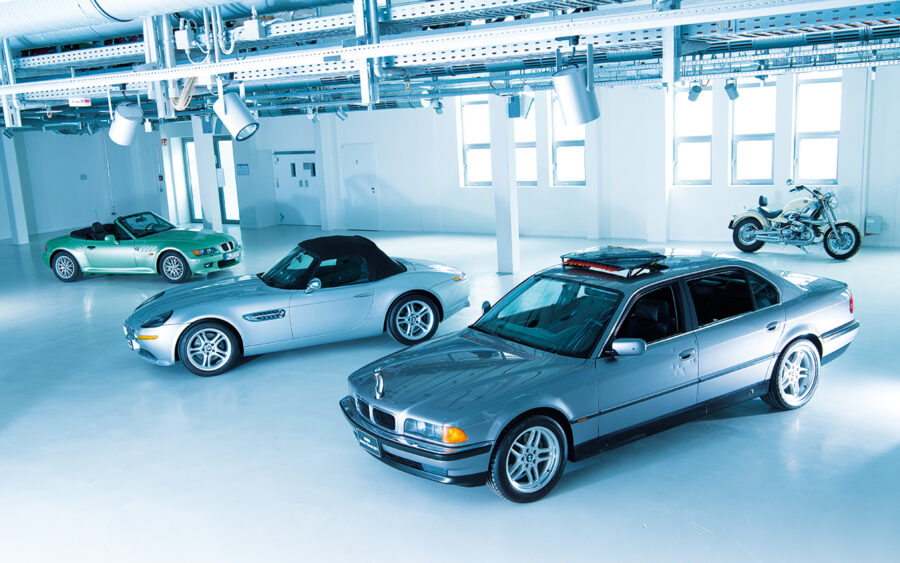
If there is one piece of evidence that could attest to the production’s use of the 728iL, it would be the change of alloys we see in the middle of the chase sequence. At one point, Bond deploys a tray of tyre spikes and immobilises the Mercedes W126 S-Class pursuing him. However, after he is forced to turn around by a security shutter – strangely impervious to the stinger missiles fired at it from the BMW’s sunroof – Bond retreats and runs over his own spikes.
Fortunately, the car is equipped with reinflating tyres, an optional extra demonstrated in close-up. Yet the alloys appear to change size and design in this shot, resembling the far less glamorous 16” wheels found on the E36 and lesser models of the E38 line-up – including the 728. Given the degree of focus afforded to the M Sport alloys, with much of the car’s screen time framed in low-angle shots as to render them practically unmissable, it is jarring to see the wheels change in this obvious continuity error.
Speaking to Jason, he was able to offer some other behind-the-scenes insights into the making of Tomorrow Never Dies, as well as share a few details from the set of the most recent Bond adventure No Time to Die, the filming of which he was invited to observe in the summer of 2019. “All BMW stunt vehicles are modified to a certain extent. Generally speaking, the ABS and traction control are disabled, so that the stunt drivers can do their thing. This can lead to unexpected problems,” he says, citing an example from No Time to Die. “There’s a Lancia Thesis in one scene and the film’s car people – led by a guy called Neil Layton – had real trouble interrogating the software to make the car do what they wanted, and still function. On Tomorrow Never Dies, though, [special effects coordinator] Chris Corbould would have overseen this process, as he still does now.”
Unceremoniously launched off the roof of a multi-story carpark, Bond’s 750iL meets a spectacular end befitting its brief, riotously enjoyable onscreen appearance.
Perhaps the most underrated of all the cars provided by Q-branch over the decades, the silver E38 of Tomorrow Never Dies has enjoyed the quiet, fervent applause of a dedicated fanbase which continues to grow within BMW forums and the comments section of the many YouTube videos sharing the film’s iconic car chase.
Imposing, sleek, undoubtedly elegant and beautifully understated, the 750iL proves that James Bond doesn’t always need to be behind the wheel of an Aston Martin to make a lasting impression. That’s the certainly the case for the writer of this article, who has adored the big Beemer since first seeing it on his VHS copy of the film aged eight. It was that car, in that film, which inspired a lifelong passion for BMWs – a passion, I’m sure, will only continue to grow stronger with each passing year.
